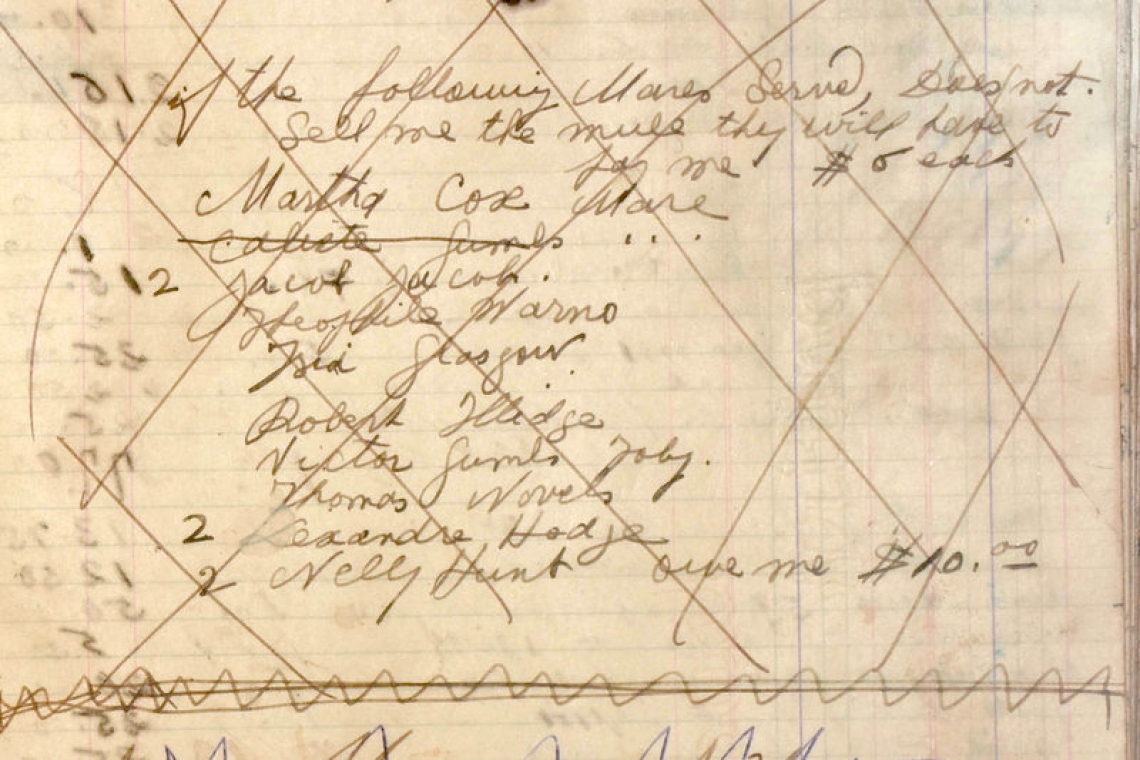By Mark Yokoyama
Old shopping lists and bank statements are not usually considered fascinating reading. How many weeks of isolation would it take to make them interesting? If we’re lucky, we won’t ever find out. On the other hand, imagine being able to look at this year’s quarantine grocery orders in 2090. Think about how much will have changed and how odd some of them may seem.
Thanks to the preservation work of the late Pierre Beauperthuy, we can do almost the same thing right now. A ledger he preserved from the late 1940s and early 1950s is like a time capsule. It reveals everyday transactions from that time. Many things still seem quite ordinary. Paint, rope, nails and flour are bought. Other entries reveal how different St. Martin was a lifetime ago.
The ledger is nearly 500 pages thick and it begins with an index of names. Familiar family names appear in alphabetical order: Arnell, Barry, Bryan, Carty, David, Flanders, Fleming, Glasgow, Gumbs, Hyman, Illidge, Laurence, Maccow, Petit, Richardson, Vlaun, Wescott, York and many more. Each name is followed by a page number, where their account is recorded in the ledger.
There are plenty of simple transactions recorded: $6.60 for a sack of flour or three tins of “varnish for chair” at Fls. 6.00. But sometimes more information is recorded. A purchase for four rolls of barbed wire and staples is followed by payments for “men cutting post” and “men running wire.”
The personal nature of relationships can also be seen. Pages may use the full name as a header, but the pages titled Arrindell Johanas are full of the nickname Dellie. “5 gallons paint for Dellie house” and payment for work done by “Dellie n other man.”
Other fascinating entries include livestock. One note reads, “If the following mares served do not sell me the mule, they will have to pay me $6 each.” It is followed by a list of ten owners who presumably had mares inseminated by a very valuable donkey.
The pricing of cattle is also quite interesting. In 1952, 28 cattle, weighting 6,404 kilos were sold for 24 carats of gold per kilogram of cow. In the ledger, the value was listed in “Dutch currency” instead of gold. It seems that the transaction was not a literal trade of gold for beef. Gold was just used to set the price.
These ledger entries are like a clouded view into the past. It is a St. Martin that most people today can’t really understand. But there are still some people living on St. Martin today who know exactly what was happening. They could decode the mysteries of this ledger and help the past come alive.
Do you want to help? You can take a look at the ledger, share what you know or ask an elder about certain entries. Find a link to the whole ledger by going to Les Fruits de Mer on Facebook or http://www.lesfruitsdemer.com/projects/heritage-backup/.
Caption: A mule or $6.







